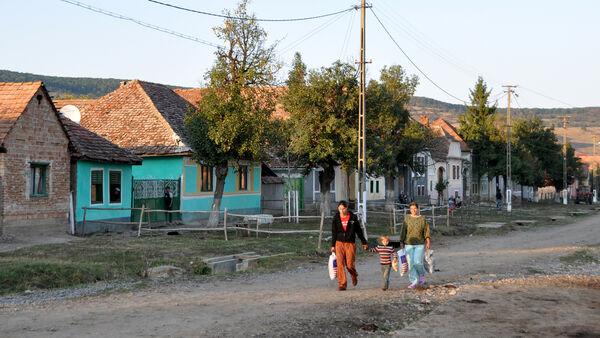Europe’s Overlooked Roma People


By Cameron Hewitt and Honza Vihan
Europe is home to a largely overlooked population of 12 million people who share a language and a culture quite distinct from the European norm. While spread out across the continent, the biggest populations live in Romania, Bulgaria, Hungary, and Slovakia. Together, the Roma people constitute a bigger European nation than the Czechs, Hungarians, or the Dutch — and yet have little political voice or cultural presence in the wider society.
The once-common term "Gypsy" (derived from "Egypt," from where they were thought to have originated) is now considered not just inaccurate but derogatory. The Roma are now thought to be descended from several low north-Indian castes. (The language still spoken by about two-thirds of today's European Roma — called "Romany" or "Romani" — is related to contemporary Indian languages.)
A thousand years ago, the Roma began to migrate through Persia and Armenia into the Ottoman Empire, which later stretched across much of southeastern Europe. Known for their itinerant lifestyle, expertise in horse trading, skilled artisanship, and flexibility regarding private property, the Roma were both sought out and suspected in medieval Europe. Similarly, the gadjos (non-Roma) and their customs came to be distrusted by the Roma.
The Industrial Revolution threatened the Roma's traditional livelihoods, making their wandering lifestyle difficult to sustain. Many Roma became entertainers (fortune telling, music and dancing, horse shows, dancing bears), outlaws, and metalworkers. Roma were initially not allowed to enter Austrian territory, but as the Habsburgs recaptured lands once controlled by the Ottomans (including Slovakia and Hungary), they permitted the Roma already living there to stay. In the 18th and 19th centuries, as "Gypsy music" funneled into the theaters of Vienna and Budapest, a romantic stereotype emerged of the Roma as people living an idyllic, nomadic lifestyle, with dancers swirling nightly around their campfires to intoxicating music — and all while weilding mystical powers over white Europeans. This notion still persists in many corners of Europe today.
But white Europe's image of the Roma also had a sinister side. Even today, people might warn their children, "If you don't behave, I'll sell you to the Gypsies!" And when someone is cheated, many English speakers say they've been "gypped" — an ethnic slur so deeply ingrained most don't realize its origin. The widespread bigotry had long been encoded in many legal restrictions that kept the Roma from enjoying full citizenship.
In the 1930s, Nazi Germany stripped the Roma of all citizenship, and in the 1940s, Hitler addressed the so-called "Gypsy question" (how to deal with the Roma population) with full-on genocide, sending hundreds of thousands of Roma to the gas chambers on the basis of ethnicity.
After the war, communist governments in central and eastern Europe implemented a policy of forced assimilation: Roma were required to speak the country's predominant language, settle in towns, and work in new industrial jobs. Rather than producing well-adjusted citizens, the policy eroded time-honored Roma values and shattered the cohesiveness of their traditional communities. It left the new Roma generation prone to sexual, alcohol, and drug abuse, and filled state-run orphanages with deprived Roma toddlers.
When the obligation and right to work disappeared with the communist regimes in 1989, rampant unemployment and dependence on welfare joined the list of Roma afflictions. As people all over formerly communist Europe found it difficult to adjust to the new economic realities, they again turned on the Roma as scapegoats, and state-sanctioned persecution continued in many areas.
Today, many Roma live in segregated ghettos. Most children start attending school, but a high percentage drop out, and many have children of their own at a very young age. Those who make it against the odds and succeed in mainstream society typically do so by turning their backs on their Roma heritage.
Many countries have no viable, organized movement for Roma rights, leaving many Roma stranded on the fringes of mainstream society. However, Europe-wide organizations (including the European Union and NGOs such as the European Roma Rights Centre) are working to seek justice for the Roma people.
Some areas have seen success stories: In the Czech town of Český Krumlov, for instance, the large Roma community of 1,000 people — about 5 percent of the town's population — are well-integrated in the life of the town while remaining proud of their cultural identity. Across Europe, many are hopeful that with the EU's increased focus on cooperation and human rights, the Roma will find a place in contemporary European society.
Cameron Hewitt is the co-author of the Rick Steves Central Europe guidebook; Honza Vihan is the co-author of the Rick Steves Prauge & the Czech Republic guidebook.

